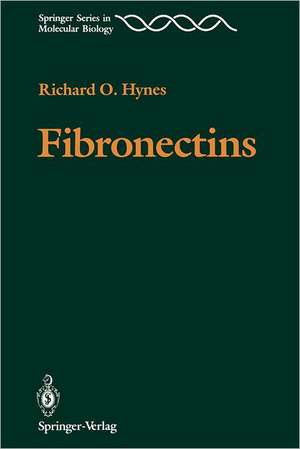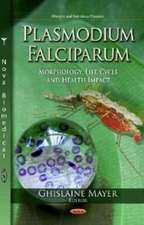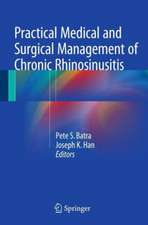Fibronectins: Springer Series in Molecular and Cell Biology
Autor Richard O. Hynesen Limba Engleză Paperback – 27 sep 2011
Preț: 653.79 lei
Preț vechi: 769.17 lei
-15% Nou
Puncte Express: 981
Preț estimativ în valută:
125.10€ • 130.62$ • 103.54£
125.10€ • 130.62$ • 103.54£
Carte tipărită la comandă
Livrare economică 05-19 aprilie
Preluare comenzi: 021 569.72.76
Specificații
ISBN-13: 9781461279402
ISBN-10: 1461279402
Pagini: 568
Ilustrații: XV, 546 p.
Dimensiuni: 155 x 235 x 30 mm
Greutate: 0.79 kg
Ediția:Softcover reprint of the original 1st ed. 1990
Editura: Springer
Colecția Springer
Seria Springer Series in Molecular and Cell Biology
Locul publicării:New York, NY, United States
ISBN-10: 1461279402
Pagini: 568
Ilustrații: XV, 546 p.
Dimensiuni: 155 x 235 x 30 mm
Greutate: 0.79 kg
Ediția:Softcover reprint of the original 1st ed. 1990
Editura: Springer
Colecția Springer
Seria Springer Series in Molecular and Cell Biology
Locul publicării:New York, NY, United States
Public țintă
ResearchCuprins
1. Introduction and Historical Overview.- 1.1 Beginnings: 1948–1976.- 1.2 Development: 1975–1977.- 1.3 An Expanding Field: 1978–1982.- 1.4 The Impact of Molecular Biology: 1983–1988.- 2. Methods for Identification of Fibronectins.- 2.1 Definitions.- 2.2 Purification of Fibronectins.- 2.3 Preparation of Antibodies.- 2.4 Immunofluorescence and Immunoperoxidase Staining.- 2.5 Immunoprecipitation.- 2.6 Radioimmunoassay (RIA) and Enzyme Immunoassay (ELISA).- 2.7 Other Immunological Assays.- 2.8 Surface Labeling of Cells.- 3. Distribution of Fibronectins in Vivo.- 3.1 Phylogenetic Distribution of Fibronectins.- 3.2 Fibronectins of Body Fluids.- 3.3 Distribution of Fibronectin in Matrices in Vivo.- 4. Expression of Fibronectins by Cells in Culture.- 4.1 General Comments and Experimental Criteria.- 4.2 Fibroblasts.- 4.3 Mesenchymal Cells.- 4.4 Chondrocytes.- 4.5 Myoblasts and Myotubes.- 4.6 Smooth and Cardiac Muscle Cells.- 4.7 Endothelial Cells.- 4.8 Platelets.- 4.9 Neutrophils.- 4.10 Macrophages.- 4.11 Neural Crest Cells.- 4.12 Astrocytes.- 4.13 Schwann Cells.- 4.14 Neurons and Neuroblastomas.- 4.15 Hepatocytes.- 4.16 Kidney Cells.- 4.17 Mammary Gland Cells.- 4.18 Amniotic Epithelial Cells.- 4.19 Keratinocytes.- 4.20 Other Epithelial Cells.- 4.21 Teratocarcinoma Cells and Their Derivatives.- 5. Interactions of Fibronectins.- 5.1 Gelatin and Collagen.- 5.2 Fibrin and Fibrinogen.- 5.3 Factor XHIa and Other Transglutaminases.- 5.4 Glycosaminoglycans and Proteoglycans.- 5.5 Gangliosides and Phospholipids.- 5.6 Actin and Other Cytoskeletal Proteins.- 5.7 DNA.- 5.8 Clq Component of Complement.- 5.9 Amyloid P and C-Reactive Protein.- 5.10 Acetylcholinesterase.- 5.11 Thrombospondin.- 5.12 Conclusions.- 6. Structure of Fibronectins.- 6.1 Overview.- 6.2 Fragmentation andLocation of Binding Sites.- 6.3 Primary Structure.- 6.4 A Single Fibronectin Gene Encodes Multiple Fibronectins.- 6.5 Post-Translational Modifications.- 6.6 Secondary and Tertiary Structure.- 6.7 Conclusions.- 7. Biosynthesis and Fibrillogenesis.- 7.1 Kinetics of Synthesis and Glycosylation.- 7.2 Disulfide Bonding.- 7.3 Composition of the Extracellular Matrix.- 7.4 Matrix Formation and Structure.- 7.5 Regulation of Levels of Fibronectin.- 8. Cellular Adhesion and Cell Surface Receptors.- 8.1 Fibronectin Binding to Substrata.- 8.2 Attachment and Spreading of Cells on Fibronectin.- 8.3 Role of Other Molecules in Cellular Adhesion.- 8.4 Role of Fibronectin in Later Steps of Cellular Adhesion.- 8.5 Cell Surface Receptors for Fibronectin.- 9. Fibronectin and the Cytoskeleton.- 9.1 Correlations and Reciprocal Effects.- 9.2 Microscopic Evidence.- 9.3 Integrins and the Transmembrane Connection.- 10. Cell Migration.- 10.1 Fibronectin and Cell Migration in Vitro.- 10.2 Fibronectin and Cell Migration in Embryos.- 10.3 Fibronectin and the Logic of Cell Migration.- 11. Development and Differentiation.- 11.1 Morphogenesis.- 11.2 Differentiation and Growth.- 11.3 Conclusion.- 12. Oncogenic Transformation.- 12.1 Altered FN Expression.- 12.2 Phenotypic Consequences of Altered FN Expression.- 12.3 Possible Mechanisms of Loss of FN.- 13. Hemostasis and Thrombosis.- 13.1 Fibronectin and Platelets.- 13.2 Fibronectin in Blood Clots.- 14. Wound Healing, Inflammation, and Fibrosis.- 14.1 Wound Healing.- 14.2 Inflammation and Fibrosis.- 14.3 Conclusions and Future Prospects.- 15. Phagocytosis and Interactions with Pathogenic Microorganisms.- 15.1 Role of Fibronectin in Phagocytosis.- 15.2 Fibronectin Binding to Microorganisms.- 15.3 Plasma Fibronectin, Reticuloendothelial Function, Trauma, andSepsis.- 16. Implications for Future Research.- 16.1 Molecular Issues.- 16.2 Cellular Issues.- 16.3 Issues of Developmental Biology.- 16.4 Issues of Physiology and Pathology.- References.






















